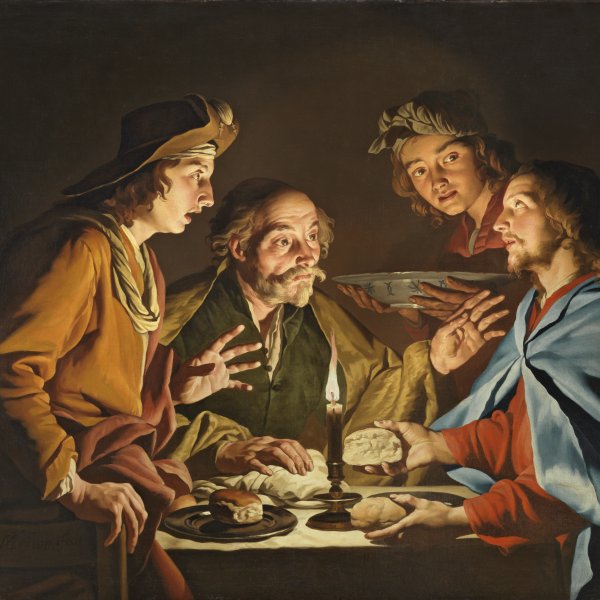Matthias Stom
Amersfoort, ca. 1600-Sicily or north Italy (?), after 1652
Little is known regarding Stom’s life and training. He was born in Amersfoort near Utrecht around 1660. His first works reveal the pronounced influence of the Utrecht Caravaggisti and it is therefore thought that he was associated with Van Honthorst’s studio in the 1620s. Stom is first documented in Italy in 1630 in the census of the Roman parish of San Nicola in Arcione, in which he is stated to be aged thirty. From a document of 1631 we know that he lived in the same house as the French painter Nicolas Provost on Strada dell’Olmo. He probably left Rome shortly after 1663 and moved to Naples, where he remained until around 1640. In Naples he came across the work of Ribera, whose influence is evident in his own paintings, such as Saint Onophrius (Pinacoteca Girolamini, Naples) and Christ among the Doctors (Martin D’Arcy Museum of Art, Loyola University, Chicago). Stom travelled to Sicily where he undertook commissions for the churches of Caccamo, Messina and Monreale in the early 1640s. His only signed and dated work is The Miracle of Saint Isidro Labrador of 1641, painted for the high altar of the Augustinian church in Caccamo (in situ). Two further works from his Sicilian phase are Saint Dominic for the church of San Salvatore in Monreale (in situ), and The Martyrdom of Saint Cecilia for the Capuchin church in Messina (destroyed in 1908). Stom is documented for the last time in Sicily in 1649 when the Italian collector Antonio Ruffo, Duke of Messina, acquired three of his works.




